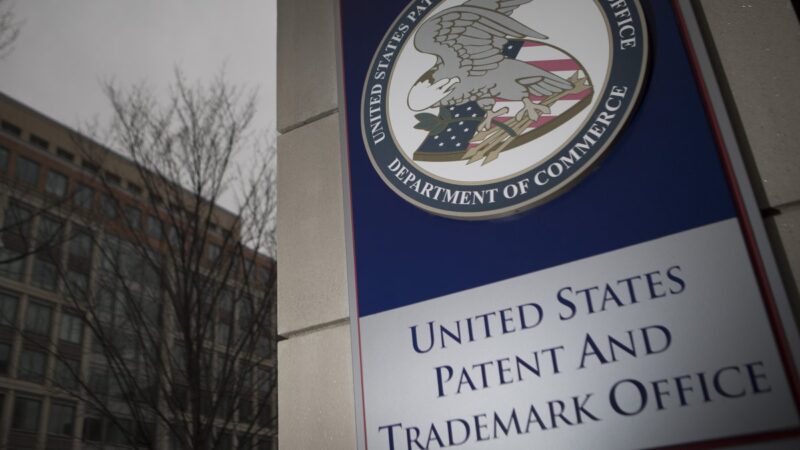The Use of March-In Rights Could Undermine Innovation and National Security

By Hideki Tomoshige and Sujai Shivakumar
By accelerating new products to market, the nation’s innovation system—a network of interconnected activities across university researchers, small and large businesses, and venture capital and other financial organizations, among other actors—enhances economic growth, competitiveness, and national security. Securing the future of this innovation system should therefore be a national priority.
The Bayh-Dole Act, enacted in 1980, is a key pillar of this innovation system. In essence, it allows institutions and other grant recipients to hold patents on inventions that stem from government-funded research, enabling them to license the rights to those inventions to private sector partners who can then commercialize them. In this way, Bayh-Dole created an incentive for private sector development and commercialization of federally funded research and development (R&D). It decentralized technology management to universities and businesses that invented technologies catalyzed by government support.
Since it was enacted in 1980, the act has led to over $1.3 trillion in U.S. economic growth, created more than 4.2 million jobs across the country, and contributed to the success of over 11,000 new start-up companies from universities throughout the United States. Bayh-Dole continues to encourage American entrepreneurship today, helping to strengthen the nation’s innovative capacity.
Bayh-Dole also provides safeguards to ensure protection against non-use or improper use of federally funded innovations. One of these safeguards, the march-in right, authorizes federal agencies to require patent owners to provide licenses to “any responsible entity or entities” if they determine that the licensee is not moving to commercialize the technology or that the action is necessary to protect public health or safety.
For decades some members of Congress and some academic observers have argued that federal agencies should make use of march-in rights in cases where the product of a federally funded innovation is seen as overpriced, particularly for prescription drugs. But in 2002, former senators Birch Bayh and Bob Dole, the sponsors of the Bayh-Dole Act, stated in an editorial that “Bayh-Dole did not intend that government set prices on resulting products. The law instructs the government to revoke such [patent] licenses only when the private industry collaborator has not successfully commercialized the invention as a product.” The senators’ statement underscores the fact that Bayh-Dole was enacted to spur innovation, not to serve as a price regulation function.
Current attempts to extend the federal government’s march-in authority to include market price for the purpose of controlling drug prices, outlined in a request for information (RFI) published by the National Institute of Standards and Technology (NIST) are therefore troubling. Specifically, the government proposes to exercise its march-in right when it deems that a drug, which at some point in its development was supported by federal funding, is being sold at an “unreasonable” or “extreme and unjustified” price. The idea is that by exercising this right, the government would grant intellectual property rights to another company in the hope that that alternative company would offer the drug at a lower price.
This proposal should be rejected. In the first place, it will not significantly lower drug prices. Drugs derived from patents developed with federal funds account for less than 10 percent of all drugs in the United States. Corporations developing products based on discoveries arising from federally funded research also invest substantially more than the government contributed, and conduct further research, product development, clinical trials and product performance validation, manufacturing technology development, and distribution infrastructure deployment, resulting in entirely new portfolios of privately owned intellectual property. Using march-in rights to control drug prices will not effectively achieve the desired policy outcome because of the limited impact on overall drug prices.
Second, the proposal has the potential to negatively disrupt the U.S. innovation system widely. Beyond attempting to control drug prices, the proposed rule amendments would expand the federal government’s march-in authority across all sectors of the economy, allowing federal agencies to challenge patents developed with federal funds across all market sectors on the basis of product price. The NIST RFI outlines potential scenarios involving patents ranging from 3D printing technology to vehicle-to-everything communications technology, face masks, and water purification technology.
Third, employing march-in rights as a means of price control creates an uncertain environment surrounding the commercialization of university research, given the lack of clear guidelines for federal officials when it comes to determining whether the market price of an innovation is “unreasonable” or “extreme and unjustified.” This uncertainty would have several adverse effects on the U.S. innovation system that would manifest in the following ways.
- Decreased investment for inventions stemming from publicly funded R&D: An uncertain environment surrounding the commercialization of university research would discourage investment in technologies resulting from federally funded research. Angel investors and venture capitalists play an important role in the U.S. innovation system by helping provide funding for research outputs to be further developed into commercial products. The potential for the federal government to exercise march-in rights would create new uncertainties, making angel investors and venture capitalists wary about providing funding in the early and most risky stages of a new commercial product. As a result, this uncertainty could inhibit the flow of risk capital into university R&D and threaten the flow of new ideas from universities to the market. The ripple effects of undermining the patent system, while narrowly intended to lower drug prices for consumers, could negatively impact innovation in many other areas.
- Decline in U.S. scientific and technological competitiveness: Countries around the world, including France, Japan, and the United Kingdom, have implemented policies similar to the Bayh-Dole Act that are tailored to their countries’ own circumstances. Efforts to weaken intellectual property rights that lead to weakening the current U.S. innovation system may encourage talented inventors to migrate to other countries with stronger intellectual property and technology transfer frameworks—reducing U.S. competitiveness.4
- Widening of the innovation gap within the United States: The uncertainty produced by granting the federal government increased march-in authority could harm U.S. regional economies and their R&D networks that depend on federal support. For instance, while approximately half of all U.S. higher education R&D expenditures exceeding $150,000 receive federal backing, the distribution varies considerably among states. Texas and Arizona, for example, derive about 40 percent of their higher education R&D expenditures from federal sources, whereas universities in states including Colorado, Maryland, and Alaska rely on federal support for approximately 75 percent of their funding. Consequently, states with a higher federal share of higher education R&D spending are poised to experience more significant adverse effects from this policy shift. Rather than fostering inclusive economic growth, such a change would exacerbate regional disparities and negatively impact federally supported higher education R&D spending across states.
Conclusion
The Bayh-Dole Act boosted technology transfer between academia and industry. The proposed framework for exercising march-in rights could undo the act’s benefit. Alternative approaches potentially exist to address drug pricing challenges while avoiding the pitfalls of using march-in rights. For instance, the Inflation Reduction Act of 2022 included a new measure to prevent drug price hikes beyond inflation rates, and Executive Order 14036 aimed to bolster antitrust enforcement, seeking to foster enhanced competition in the market.
Indeed, the proposed march-in rights framework poses a direct threat to U.S. national security and competitiveness. The Bayh-Dole Act is a cornerstone of global innovation policy, and the NIST proposal to invoke federal march-in rights at the government’s discretion to address what it deems to be unfair market prices would pose a self-inflicted harm on a key foundation of American innovation.
Hideki Tomoshige is an associate fellow with the Renewing American Innovation (RAI) Project at the Center for Strategic and International Studies (CSIS) in Washington, D.C. Sujai Shivakumar is director and senior fellow of the RAI Project at CSIS.
This piece was originally published on May 23rd, 2024 with the Renewing American Innovation (RAI) Project at the Center for Strategic and International Studies (CSIS).


Assessing the Patent and Trademark Office’s Inventorship Guidance for AI-Assisted Inventions
